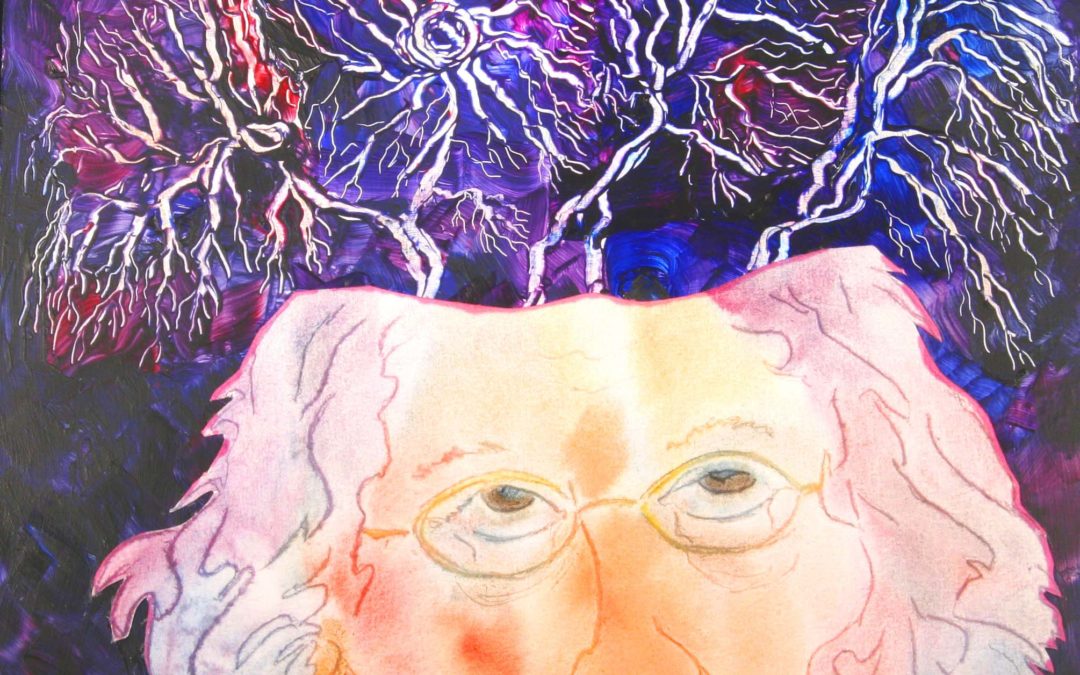
May 9, 2019
In the old days, people used to retire and then, if age 62 or older, start to collect Social Security. We now know that this could be a terrible approach, costing literally hundreds of thousands of dollars in lost benefits over a lifetime, depending on how long you live.
The benefit
There is no pile of money waiting for you when you retire. Instead, when you are working, both you and your employer generally contribute each year to Social Security. Those contributions support current retirees. When it is time for you to collect, working people and their employers then will pay you from incoming contributions and from the US Treasury. The amount will be based on:
- your average inflation-adjusted salary over the best 35 years (not necessarily consecutive) of your contributions. That average is recalculated each year to reflect new earnings, even if you are already collecting.
- the age you start to collect. If you start when you are younger, perhaps at age 62, you collect a smaller amount but for more months. If you start when you are older, you collect more each month but for fewer months. Can you ever catch up for lost benefits if you start later? Yes, at approximately age 79.
- the inflation rate. Once you are collecting, the benefit may increase depending on the rate of inflation. It could stay the same if there is no inflation, but it will never decrease.
Social Security periodically will send you a statement that includes your monthly benefit at three ages: 62 (the youngest age at which you can collect) or now if you are currently older, 70 (the oldest age it makes sense to begin collecting) and at your Full Retirement Age (FRA). If you were born in 1954 or earlier, then your FRA is age 66. If you were born in 1960 or later, then your FRA is age 67. If you were born in between, your FRA is in between.
You can set up your own Social Security account to learn your own numbers at www.ssa.gov
The Treasury now has a three trillion dollar Trust Fund IOU to Social Security which was accumulated when the payments to Social Security exceeded the payments out. If and when the Trust Fund is exhausted, perhaps in 14 years, payments will drop 25% across the board – unless the government changes the rules. Congress has fixed many problems in the past.
Collection and work
There is no relationship between collecting Social Security and retirement. You can work and collect or not. You can be retired and collect or not. However, if you are not yet at your FRA and are working, your benefit will be reduced by $1 for every $2 you earn more than $17,640 in 2019. At or beyond your FRA, earned income does not reduce your benefit.
Taxation of Social Security benefits
Part of your Social Security benefit may be taxed. For purpose of taxation your “combined income” is your adjusted gross income plus non-taxable income plus half of your Social Security. If you are single and your combined income is less than $25,000, it is not taxable. If between $25,000 and $34,000, 50% of the benefit is taxed. If greater than $34,000, 85% of the benefit is taxed. If you are married and filing jointly, the corresponding thresholds are $32,000 and $44,000.
Filing for Social Security benefits
You can apply on-line, by telephone, or in person at a local Social Security office (by appointment is better.) You need to present proof of age (your Social Security card, passport, or birth certificate) and marriage related information if appropriate (marriage certificate, divorce decree, death certificate if widowed). It can take six weeks to process your application and start your benefits.
Next blogs
Social Security is complicated in part because it has different rules for those of different marital statuses. It has three categories – married, never been married, and divorcees / widows. The next three blogs, to be distributed weekly instead of biweekly, will discuss the principles and strategies for each of these categories.
The author does not provide tax, legal or accounting advice. This material has been prepared for informational purposes only and is not intended to provide, and should not be relied on for tax, legal or accounting advice. You should consult your own tax, legal, accounting and financial advisors before engaging in any transaction or taking any actions with regard to the content discussed above.

Apr 23, 2019
Something BIG, a Bold Imaginative Goal, can add meaning to your retirement and lead to an amazing life. (See my last blog.)
How can you make a BIG project actually happen? Consider three examples: launching a business, learning a foreign language, or developing a great relationship with grandchildren.
Launch a business. You may have always wanted to do this. But you might tell yourself messages about why it can’t or won’t happen. You might not be sure what kind of business to launch, you did not go to business school, and you’ve never done this before. But you are still interested.
Making this BIG idea happen could mean figuring out
- what business idea gets you excited,
- what societal or marketplace problem your idea will solve,
- what resources you will need,
- whom to get help from and work with, and
- how to pitch the idea.
Notice that the key questions are not if you can do this, but how you will do this. All involve extensive brainstorming with other people.
Learn a foreign language. This might seem to be an enormous challenge as you age, because you notice that you even have trouble remembering words in English. This project can have several scopes. You can take a language class in person or on the computer, or you can find a language immersion program. You can join a language club where you have frequent opportunities to use it. You can plan an extended stay with lots of touring in a foreign country, maybe even take a class there in that language.
Develop a great relationship with your grandchildren. Your BIG idea could be to develop a special relationship with your grandchildren. You might spend extensive time with grandchildren on a regular basis, when they are young and their parents are at work. When they are older you can take them traveling to anywhere they want to go. Or you can encourage them to follow their own dreams by spending money to send them to camp or pay for special lessons of their choice. Or you could introduce them to people who are farther along pursuing interests similar to their own and could become your grandchildren’s mentors.
Doing something amazing in retirement may push you out of your comfort zone. Here are some ideas that may accelerate your success.
- Look for concrete examples of people who have had success. They can be role models for you to follow.
- Think about a variety of ideas before picking one to try. Read, brainstorm with others, and Google. Courage and commitment are necessary. Nothing good comes without them.
Anything you do that is BIG will be outside your comfort zone. How far you want to go outside the comfort zone is up to you. If not enough to stretch you, it may not give you much satisfaction. If too far, you could get discouraged and give up. So here are two other ideas for making it work.
- Break your project down into small steps. Success in finishing those steps will give you a sense of accomplishment and the courage to proceed.
- Having a positive attitude will be critical. Especially for a big project, you will most likely get discouraged at times. Focus as much on your progress as on the goal itself. This is the “glass-is-half-full” approach.
Let me know your progress on your own BIG retirement projects. With your permission, I’ll share your stories so you can inspire others!

Apr 10, 2019
Retirement is another opportunity to have an amazing life. What will make this stage of life amazing for you?
What do you most want to do and accomplish over the rest of your life? What do you regret never having had a chance to do before?
Stephen Covey, in his book First Things First, tells a story about a bucket. An instructor fills a bucket with big rocks. He asks his students if the bucket is full. Then he proceeds to add first small stones into the bucket, then sand, and finally water. When he asks the students about their interpretation of the exercise, they conclude that there is always room for more. But no, the instructor says, not unless you put the big rocks in first!
What are your big rocks?
Nowadays, in the 21st century, your retirement could be as long as your working years. You may well have the time, money, and energy to accomplish many amazing things.
Even so, a lifetime is finite—like the space inside the bucket is finite.
When you have a full-time job, your job is one of your biggest rocks. When you take that rock out of your bucket, there is a big hole to fill. You can fill it with the equivalent of small stones, sand and water – or you can find something else BIG, another big rock.
BIG is an acronym for Bold Imaginative Goal. Here are some examples:
- Launching a business
- Learning a foreign language
- Learning to play a musical instrument
- Developing a special relationship with grandchildren
- Changing the world
Here are some examples of people whom I have met who did just that.
- Jerry was a very successful professional in a specialized field. On the side while working he would write stories about his youth and get some of the published. When he was in his 70’s, he decided that he had had enough of his regular work and retired. So in his 80’s he compiled his stories into a book and published it. Then he did it again. Then he wanted to write about his professional career. He did that too.
- Joel loved working with children as a Social Worker. Then he went to law school and worked for Legal Aid. He got a job in a “real” law firm and again was very successful. Now retired and in his 60’s he wanted to work but not at a job. So now he volunteers at Legal Aid, at a school for problem kids and at another nonprofit.
- Jan was always an activist and worked for a while in local government. A life-long learner, at age 60, she went back to school to get a PhD. Now in her late 80’s she continues in her work as an activist, with a focus on improving opportunities for older people. She has founded several grass-roots organizations active here and in other countries .
- Bill is a tennis player, retired from a professional career, who continues to play tennis and beat others a generation younger.
- John is a Delta pilot who was forced to retire at age 65. He still had his energy and great health and wanted to continue flying. So he is now a pilot with a smaller company.
- Channah is a widow in her 90’s who has trouble getting around but has all of her wits. She lives in a Senior Facility, goes to every cultural event available there, and takes an Uber when she needs to go to others off campus.
- Harvey is a retired principal in his 80’s who is on the Boards of many nonprofits. He and his wife Sharon Ann pull their large extended family together multiple times each year for awesome gatherings.
Writing my book Serious About Retiring (coming May 1!) has been a BIG rock for me. And I plan to do a lot around the book—speaking, holding workshops, counseling individuals—so this will be my rock for a long time. Also, I continue to progress slowly in learning the cello, which I started at age 73 (see my blog on this.) I have some ideas for long bicycle trips too. We’ll see.
I would love to hear about your BIG rocks. Tell me about what you are doing or will do so your retirement will be amazing.

Mar 20, 2019
Is there any way to reduce your tax burden post-retirement? After all, income taxes will be one of your largest expenses in retirement, particularly after you turn 70½.
Upon retirement you will most likely need some income from your investments. It is less expensive to take money from personal investment or savings accounts, rather than retirement plans, because you would pay no income taxes on some or most of that money. You would then let your IRAs grow for later on.
However, that is no longer possible after 70½. When you are retired and age 70½ or older, you are required to take at least a minimum amount of money as a distribution (RMD) out of your IRAs and retirement plans. These distributions, which start at 3.65% of the total value in retirement plans and IRAs and increase each year, are taxable, whether you need the money or not.
One approach to reduce taxes is to reduce the amount of money in your traditional IRAs by converting them to Roth IRAs, which do not have RMDs. Like traditional IRAs that grow tax deferred, you get no 1099s for income taxes and pay no taxes until you take money out. Unlike traditional IRAs, Roth IRA distributions are not taxed, so you can let them grow untaxed, even through the next generation if set up properly.
This approach does not eliminate taxes, but it’s possible to come out ahead in actual money to spend, plus reduce you RMDs and their associated taxes. A Roth conversion requires paying taxes on all of the IRA money being converted.
So why would you want to pay taxes much earlier than you need to?
- Total taxes are lower if done before investments in the IRA have grown substantially later on.
- If you have “extra” cash to pay the taxes for the Roth conversion, you are effectively converting lower paying taxable cash into higher-earning non-taxable investments. See the example below*.
If you have substantial IRA assets that you want to convert, the tax bill for doing this can be substantial, particularly if you are thrown into a higher tax-bracket. You may be able to keep out of the higher bracket if you convert a smaller amount each year. To accomplish the conversion of a substantial amount overall, you need to start early,
| * This example is hypothetical and is being used for illustration purposes only.
It assumes that the tax rate is 20% on Roth conversion and distributions from the IRA. |
| It assumes that cash is used to pay taxes for the Roth conversion. |
|
|
No IRA Conversion |
|
IRA Conversion to Roth IRA |
|
Old IRA |
Cash |
|
New Roth |
Cash |
|
Account |
Account |
|
Account |
Account |
|
|
|
|
|
|
| Initial value |
100,000 |
30,000 |
|
100,000 |
30,000 |
| Tax on conversion |
– |
– |
|
– |
20,000 |
| Net invested |
100,000 |
30,000 |
|
100,000 |
10,000 |
|
|
|
|
|
|
|
Assume over 10 years IRA grows 7%/year, i.e. doubles. Cash increases 25%. |
|
|
|
|
|
|
|
Value after growth |
200,000 |
37,500 |
|
200,000 |
12,500 |
| Tax on distribution |
40,000 |
– |
|
– |
– |
| Net to spend |
160,000 |
37,500 |
|
200,000 |
12,500 |
|
|
|
|
|
|
| Grand total to spend |
197,500 |
|
|
212,500 |
|
| Extra money to spend |
|
|
|
212,500 – 197,500 = 15,000 |

Mar 6, 2019
Use it or lose it. If you don’t exercise, your muscles could atrophy. But the good news is that if you start to exercise, even at an advanced age, your capabilities can increase. You may even end up stronger than you were when you were younger. With regular exercise, you will have more energy and be less at risk of falling.
The same is true about your mind. As difficult as it is to lose some physical capabilities, it is even more serious to lose your mind. Alzheimer’s and other forms of dementia are associated with advanced age. But recent research suggests that education, work, and active leisure can slow down the loss of mental capabilities and postpone the symptoms of Alzheimer’s. New experiences of all kinds stimulate the brain: solving puzzles, learning a language, memorizing music or a poem, engaging in hobbies, volunteer activities, travel to new places, taking classes…
Some universities, like the University of Minnesota, permit those over 65 to take any class there in person for free, as long as there is space and you do not need the college credit. Some universities also offer MOOCs, Massive Open Online Courses, over the internet some without charge – so you don’t have to leave your home.
When we learn, we grow dendrites—these are the nerve connections in the brain. This happens when we’re old, as well as while we’re young. So if we keep learning, we grow dendrites. My wife, Lucy Rose Fischer, in her book, I’m New at Being Old, imagines that because she’s always learning, she grows lots and lots of dendrites—so she has dendrites, like tendrils, popping out of her head. (See her illustration with this blog.)
The old paradigm to describe the life stages was the three-boxes-of-life model. When you are young, you learn – so that you will have the tools to work and support yourself later on. Then there is the working stage of life where you earn a livelihood and support yourself and family. Finally comes the playing stage where you are rewarded for a lifetime of work by not having to learn anything or work.
Now we celebrate a more integrated life. We need to learn, work and play at all stages of our lives.
Just like physical exercise, mental exercise works best if you push yourself. Two activities with the best reputations for challenging your mind are learning a foreign language and learning a musical instrument. Yes, both of these are more challenging as you age because of the decline of some types of memory. But both of these may be more effective precisely because of their challenges.
You might believe that retirement is not a time for challenges or goals – that it is a time to relax and have fun. But learning is fun at all ages!
What makes you curious? What do you want to learn? How are you going to make your dendrites grow?

Feb 19, 2019
Your investments will probably be a major component of your retirement income. So it is important to avoid two serious mistakes as you prepare your investments for retirement. The first mistake is taking more risk than you are comfortable with. If your investments are too risky, you might bail out if there’s a big drop—this is called “selling low.” The other mistake is having too little risk in your investment mix so your investments won’t have enough horsepower to last for your whole lifetime.
Here is a tool to address both of these problems.
There is a cutting-edge computer application – an app – that evaluates your individual preferences in terms of how much risk you want to have in your investment portfolio. This app, which is called Riskalyze, lets you decide on the worst decline of investment values that you are prepared to accept over a six-month period without panicking. Riskier investments, in general, have the potential for higher long-term returns. But if the swings are too large for you, you might not be able to live with a mix that is too risky.
For example, you might be able to tolerate a maximum 12% decline if you have a similar chance of receiving an 18% positive return, but no more of a decline than that. Associated with that amount of risk is a number called your personal Risk Score.
This app also contains risk scores for almost all investments, including mutual funds, individual stocks and bonds, and annuities. The app can compute the Risk Score for any mix of investments that you might own. It takes the quality of diversification into account when computing the investment Risk Score.
The next step is to compare your personal Risk Score with your own investment Risk Score. Do they match or not? If not, optimally you would adjust your mix of investments until the two scores do match.
It should come as no surprise that an app which contains so much current investment information and is so powerful is not free. It is also not easy for an inexperienced investor to use. Financial planners may have the Riskalyze app in their toolbox to help you. As you prepare your investments for retirement, it would be prudent to ask your financial advisor if they can use their own copy of Riskalyze to help you in this way.
Another useful benefit of the Riskalyze app is that it calculates a projected long-term rate-of-return for your investment mix and also tells you the maximum amount of monthly income you can take out for your projected lifetime. Working with your financial professional, you can adjust your mix of investments and spending plans so that your money will last as long as you do.






